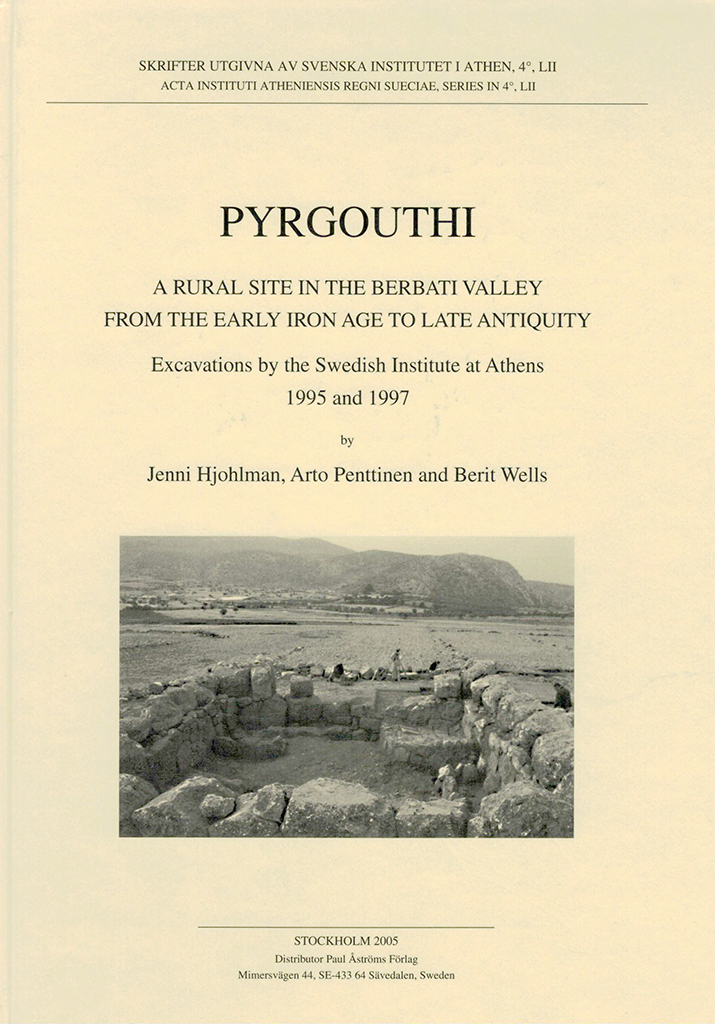Distributed by Astrom Editions. View record at WorldCat. Pyrgouthi. A rural site in the Berbati Valley from the Early Iron Age to Late Antiquity. Excavations by the Swedish Institute at Athens 1995 and 1997 By Jenni Hjohlman, Arto Penttinen & Berit Wells, with contributions by Yannis Bassiakos, Katie Theodorakopoulou, Hero Granger-Taylor, Sven Isaksson, Petros Lymberakis, Dimitra Mylona, Maria Ntinou, Anaya Sarpaki & George Syrides This volume presents the results of the excavations in 1995 and 1997 at Pyrgouthi in the Berbati Valley, Argolis, Greece. The toponym is the local denomination for a Hellenistic tower, which has always been a prominent in the landscape. In the surface survey of the valley in 1988–1990 the tower was perceived as part of a Classical farmstead and in the ensuing excavation project it was targeted as such. However, the excavations revealed that this interpretation corresponded to but a fraction of the truth. The tower had been built on a knoll in the center of the valley but the earliest human activities at the site can be dated to the end of the Early Iron Age or the eight century BC. At this point in time, Arto Penttinen argues, the archaeological record can be reconciled…
Published by the Swedish Institute of Classical Studies in Rome. Distributed by Astrom Editions. Fortification towers and masonry techniques in the hegemony of Syracuse, 405–211 B.C. By Lars Karlsson Syracuse assumed the leadership of the Greek cities after the Carthaginian wars of 409–405 B.C. and the first chapter discusses the four main periods which can be discerned in the archaeological material: (1) the rule of Dionysios I, 405–367 B.C., (2) the period of Timoleon, 244–c. 316 B.C., (3) Agathokles, 316–289 B.C., and (4) the rule of King Hieron II, 270/69–215 B.C. Pyrrhos, as king of Syracuse in 278–276 B.C., was also responsible for work on Sicilian fortifications. Towers with internal crosswalls are treated in Chapter Two and they appear in two types. The first group consists of seven towers with internal walls in the shape of a T (the ‘Epipolai Towers’). The towers are large and square, measuring 10–12 m. (around 30–35 Doric ft.) on a side. The second group of towers with interior walls in the shape of a Greek cross, is common in Sicily. Twelve square examples are known (plus two circular and two semicircular). The square towers frequently measure 6.60 m. (20 Doric ft.) on a side….


